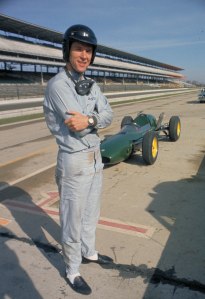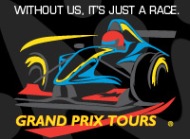Sir Jack Brabham – in his own words
 And so the greatest of all driver/constructors has passed on: Sir Jack Brabham not only won two successive World Championships as a professional racing driver (1959/60, with Cooper) but also the 1966 World Championship as a driver/constructor. I doubt we shall see his like again. A self-starter, a racer who enjoyed tinkering with damper rebound as much as he enjoyed flying his own aircraft and racing anything on wheels (from F1 cars to sports cars to touring cars to Indy cars), Sir Jack at heart was just a straightforward Aussie who loved motor racing first and the glamour and the publicity just about last. I count myself lucky to have seen him race on several occasions, most notably at Warwick Farm in 1963, when I was 10. It was sweltering, Jack started from the back of the grid – but through the field he drove in that turquoise new Brabham-Climax of his. I was a fan for life. Many will be the words written about Sir Jack but no-one is better-placed to comment than Dan Gurney, the winner of the first race for Brabham (1964 French GP). This is what he said earlier today:
And so the greatest of all driver/constructors has passed on: Sir Jack Brabham not only won two successive World Championships as a professional racing driver (1959/60, with Cooper) but also the 1966 World Championship as a driver/constructor. I doubt we shall see his like again. A self-starter, a racer who enjoyed tinkering with damper rebound as much as he enjoyed flying his own aircraft and racing anything on wheels (from F1 cars to sports cars to touring cars to Indy cars), Sir Jack at heart was just a straightforward Aussie who loved motor racing first and the glamour and the publicity just about last. I count myself lucky to have seen him race on several occasions, most notably at Warwick Farm in 1963, when I was 10. It was sweltering, Jack started from the back of the grid – but through the field he drove in that turquoise new Brabham-Climax of his. I was a fan for life. Many will be the words written about Sir Jack but no-one is better-placed to comment than Dan Gurney, the winner of the first race for Brabham (1964 French GP). This is what he said earlier today:
“It is with great sadness that I received the news that my former Formula boss and team mate, the three-time F 1 World Champion, Sir Jack Brabham, passed away in Australia over the weekend. A motor racing giant has left our planet whose combined achievements of F 1 World Championship driver and car constructor in all likelihood will never be equaled. Dark-haired “Black Jack” was a fierce competitor, an outstanding engineer, a tiger of a driver, an excellent politician and a hands-on creator and visionary; he opened the rear-engine door at Indianapolis and raced there. He was a doer, a true Aussie pioneer!
“Jack and I go far back in history together. We raced against each other on the F 1 circuit from 1959, driving Coopers, Ferraris, BRMs and Porsches. In 1963 he hired me as his team-mate for his newly-established Brabham F I team and during the next three years we really got to know each other. We discovered we shared similar traits. We were not only interested in driving racing cars but in building them, improving them, searching for every tiny bit of technical advantage we could find. I see both of us sitting in garages all over the world bent over engines, talking to each other and to our team: Ron Tauraunac, Phil Kerr, Roy Billington, Tim Wall, Nick Gooze and Denis Hulme.
“We shared the camaraderie of a closely-knit team pursuing a common purpose; the racing tragedies and the glory days of the 1960s bonded us for life.
“Since we retired from driving, both in the fall of 1970, we have stayed in touch. I last spoke to Jack a few months ago on the phone. We were looking forward to the golden anniversary of the first World Championship F 1 victory for the Brabham marque: The French Grand Prix at Rouen, June 28, 1964, which I won for the team 50 years ago this summer.
“In 1966 we both went our separate ways. I followed the trail he had blazed by trying to build, race and win with my own F I cars. I have been told that only three men in the history of motor racing have managed to do that. Bruce McLaren and I won races but Sir Jack Brabham won World Championships. He will be forever in a class by himself.
“I will miss you Jack! You showed the way!”
Alan Brinton was an excellent British journalist with whom Jack always had a great rapport. Alan ghosted Jack’s regular column in Motor Racing magazine – and often interviewed him at a time when “interviews” were not really fashionable. When I first came to England, in 1972, I complimented Alan on his work and very kindly he gave me a bundle of tapes he had made over the years. Amongst them was a conversation he had had with Sir Jack just prior to his last Grand Prix, in Mexico, 1970. You can listen to it now (below). And by means of a postscript to this interview, I once had a long chat with Jack in his office near Chessington, during which he took up the story of what happened after his retirement: “Well, I retired, just like the family wanted,” he said in that way of his, “and then blow me if a year later the kids all wanted to come back to England to go motor racing! By then it was too late. Ron had sold the team” (for £750,000!) “and nothing was the same.” I always felt that the sport missed a huge opportunity when Jack wasn’t welcomed more into the post-1971 world of F1. He should have been at the front end of the Brabham team – the team he created – for at least the next couple of decades. And he would have been a brilliant ambassador for the sport, too. Jack took his disappointments well, however – as is clear in the interview here. He was a man of cast-iron strength.
Besides, his achievements will forever tell the story. For those that really know F1, and love F1 – like Dan Gurney – Jack was, and will always remain, a titan.














